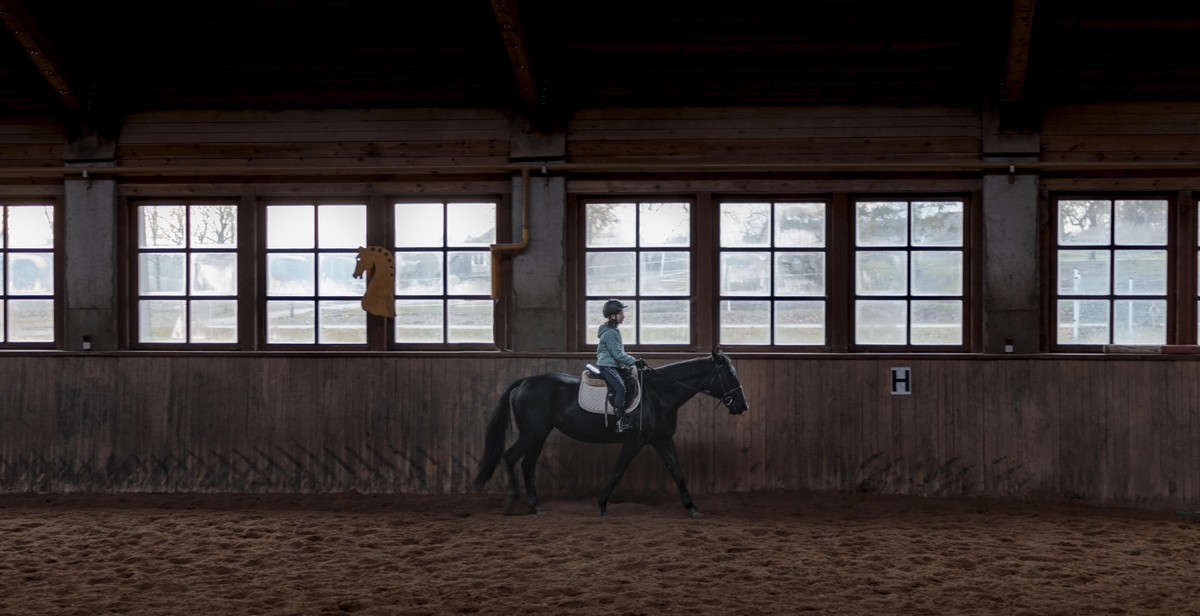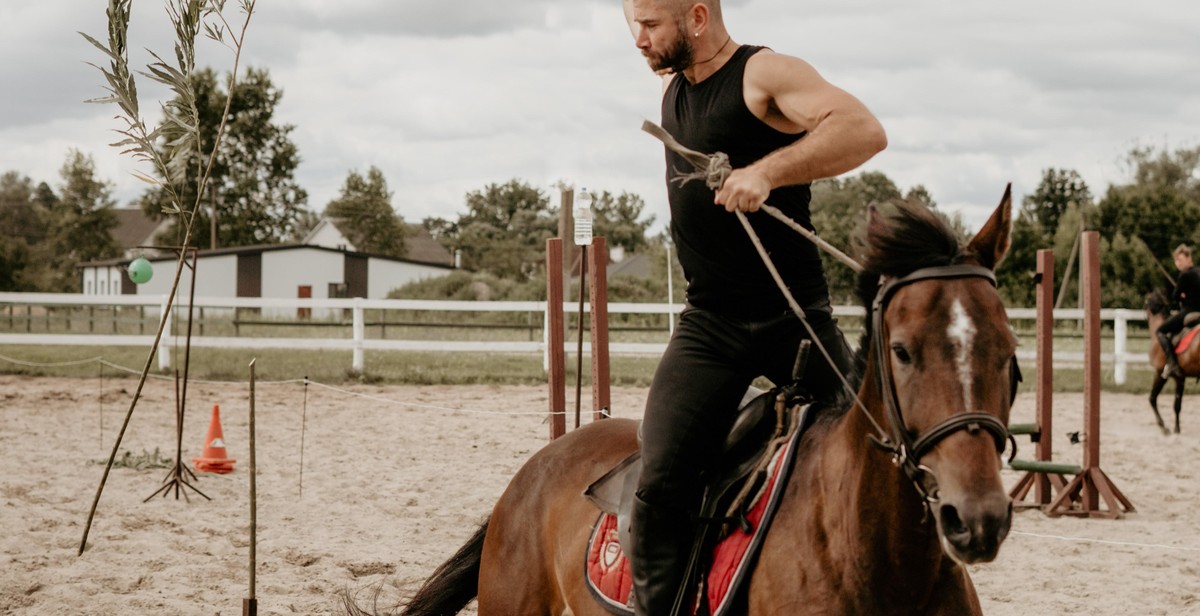How to Train a Horse: Techniques for Teaching Your Horse Basic Commands and Riding Skills
Training a horse can be a challenging but rewarding experience. Whether you’re a seasoned equestrian or a beginner, teaching your horse basic commands and riding skills is essential for building a strong and trusting relationship with your equine partner. In this article, I will share my personal experience and techniques for training a horse.
Understanding Your Horse’s Behavior
Before starting any training, it’s important to understand your horse’s behavior. Horses are prey animals and have a natural instinct to flee from danger. This means they can be easily spooked and may become anxious or aggressive if they feel threatened. By reading your horse’s body language and understanding their behavior, you can build a strong bond and communicate effectively with your horse.
Basic Training Techniques
When it comes to training a horse, consistency is key. Start with basic commands such as “whoa” and “walk on” and reward your horse with treats or praise when they respond correctly. Gradually introduce more complex commands such as “trot” and “canter” and use positive reinforcement to encourage good behavior.
- Use clear and concise commands.
- Be patient and consistent.
- Avoid punishment or negative reinforcement.
Riding Skills
Once your horse has mastered basic commands, it’s time to move on to riding skills. Start with simple exercises such as circles and serpentines to improve your horse’s balance and suppleness. As your horse progresses, introduce more advanced exercises such as lateral work and jumping. Remember to always prioritize safety and wear appropriate riding gear.
Training a horse takes time, patience, and dedication. With the right techniques and a positive attitude, you can build a strong and rewarding partnership with your horse.
Understanding Your Horse’s Behavior
Before you start training your horse, it’s important to understand their behavior. Horses are social animals that have a strong herd instinct, and they communicate primarily through body language. By learning to read your horse’s body language, you can better understand their mood and behavior, and adjust your training approach accordingly.
Horse Psychology and Body Language
Horses are prey animals, which means they are constantly on the lookout for potential threats. As a result, they can be easily spooked or frightened by sudden movements or loud noises. When a horse is feeling confident and relaxed, they will exhibit calm body language: their ears will be forward, their eyes will be soft, and their head will be held low. However, if a horse is feeling anxious or fearful, their body language will change: their ears will be pinned back, their eyes will be wide, and they may tense up or try to bolt.
It’s also important to understand the hierarchy within a horse herd. Horses establish their position in the herd through dominance and submission. When working with your horse, it’s important to establish yourself as the leader and earn their respect. This can be achieved through consistent training and clear communication.
Establishing Trust and Respect
Building a relationship with your horse based on trust and respect is crucial for successful training. To establish trust, you must be patient and consistent with your horse. Spend time grooming and bonding with your horse outside of training sessions. This will help them feel comfortable around you and build a positive association with training.
Respect is earned through clear communication and consistent training. Horses respond well to positive reinforcement, so reward them when they exhibit desirable behavior. However, it’s important to correct undesirable behavior immediately and consistently. This will help your horse understand what is expected of them and establish you as the leader.
Overall, understanding your horse’s behavior and body language is crucial for successful training. By establishing trust and respect, you can build a strong relationship with your horse and achieve your training goals.
Teaching Basic Commands
Teaching basic commands to your horse is crucial for establishing a foundation for further training. The following techniques will help you teach your horse basic commands:
Leading
Leading is an essential skill for your horse to learn. To teach your horse to lead, use a lead rope and halter. Start by standing on your horse’s left side and attach the lead rope to the halter. Hold the rope about a foot away from the halter and gently pull on the rope. If your horse moves forward, release the pressure and reward your horse with a treat. Repeat this process until your horse follows your lead without any resistance.
Tying
Tying is another important skill for your horse to learn. Start by tying your horse to a sturdy post or hitching rail. Use a quick-release knot so that you can easily untie your horse in case of an emergency. Gradually increase the amount of time your horse is tied, rewarding your horse with a treat each time you untie him.
Groundwork
Groundwork involves teaching your horse basic commands on the ground. Start by teaching your horse to move forward, stop, turn, and back up. Use a long lead rope and a training stick to guide your horse. Reward your horse with a treat each time he responds to your command.
Mounting and Dismounting
Mounting and dismounting are crucial skills for both you and your horse. Start by standing on a mounting block or sturdy surface. Gently place your foot in the stirrup and swing your other leg over your horse’s back. Once you are in the saddle, sit quietly and calmly. To dismount, gently swing your leg over your horse’s back and slide down to the ground.
| Basic Commands | Description |
|---|---|
| Walk | A slow, steady gait. |
| Trot | A faster, bouncier gait. |
| Canter | A smooth, flowing gait. |
| Whoa | A command to stop. |
| Back up | A command to move backwards. |
Teaching your horse basic commands takes time and patience. Remember to reward your horse with treats and praise each time he responds to your commands. With practice, your horse will learn to trust and respect you, making further training easier and more enjoyable.

Riding Skills
Teaching your horse to ride is an exciting and rewarding experience. However, it’s important to remember that horses are large animals and can be unpredictable at times. Before you start training, make sure you have the necessary equipment and safety gear, and that you are working with a well-trained and responsive horse.
Walk
The walk is the most basic gait for a horse and should be the first skill you teach your horse. Start by using gentle pressure from your legs to encourage your horse to move forward. Keep your reins loose and allow your horse to walk at their own pace. As your horse becomes more comfortable with the walk, you can start to refine their gait and work on their responsiveness to your cues.
Trot
The trot is a two-beat gait that is faster than the walk. To teach your horse to trot, use a combination of leg pressure and rein cues to encourage them to speed up their gait. It’s important to maintain a steady rhythm and to keep your body balanced and centered while riding.
Canter
The canter is a three-beat gait that is faster than the trot. To teach your horse to canter, start by getting them into a steady trot. Then, use a combination of leg pressure and rein cues to encourage them to transition into a canter. Be patient and give your horse time to adjust to the new gait.
Stopping and Backing Up
Stopping and backing up are essential skills for any horse. To stop your horse, use a combination of rein and leg cues to slow them down and bring them to a complete stop. To back up, use your reins and leg pressure to encourage your horse to step backward. It’s important to practice both of these skills regularly to ensure that your horse is responsive and obedient.
Turning and Steering
Turning and steering are important riding skills that allow you to control your horse’s direction and movement. To turn your horse, use your reins to guide them in the direction you want to go. Use your legs to apply pressure and encourage your horse to turn. It’s important to maintain a balanced and centered position while turning to ensure that your horse stays on the correct path.
| Skill | Description |
|---|---|
| Walk | The most basic gait for a horse |
| Trot | A two-beat gait that is faster than the walk |
| Canter | A three-beat gait that is faster than the trot |
| Stopping and Backing Up | Essential skills for any horse |
| Turning and Steering | Important skills for controlling your horse’s direction and movement |

Advanced Training Techniques
Once your horse has mastered the basic commands and riding skills, you can move on to more advanced techniques to further develop your horse’s abilities. Here are some techniques to consider:
Collection
Collection is the ability of the horse to bring his hindquarters underneath him and carry more weight on his hind legs. This is essential for advanced riding such as dressage and jumping. To teach collection, start by asking your horse to move forward in a balanced and rhythmic manner, then gradually ask him to slow down while maintaining the same rhythm. This will encourage him to shift his weight back and bring his hindquarters underneath him.
Lateral Movements
Lateral movements such as shoulder-in, haunches-in, and leg yield can improve your horse’s balance, suppleness, and flexibility. To teach lateral movements, start by asking your horse to move forward in a straight line, then apply pressure with your leg to ask him to move sideways. Use your reins to maintain a slight bend in the direction of the movement.
Jumping
Jumping is a great way to challenge your horse’s athleticism and improve his confidence. Start with small jumps and gradually increase the height and difficulty. Always approach the jump at a steady and balanced pace, and make sure your horse is properly warmed up and conditioned for jumping.
Trail Riding
Trail riding is a fun and relaxing way to keep your horse fit and mentally stimulated. It also helps to build trust and confidence between you and your horse. When trail riding, make sure to choose a safe and appropriate trail, bring plenty of water and snacks, and always wear a helmet.
